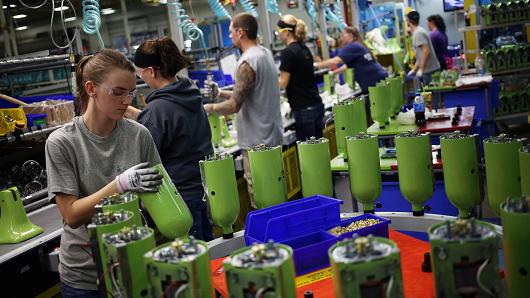-
Tips for becoming a good boxer - November 6, 2020
-
7 expert tips for making your hens night a memorable one - November 6, 2020
-
5 reasons to host your Christmas party on a cruise boat - November 6, 2020
-
What to do when you’re charged with a crime - November 6, 2020
-
Should you get one or multiple dogs? Here’s all you need to know - November 3, 2020
-
A Guide: How to Build Your Very Own Magic Mirror - February 14, 2019
-
Our Top Inspirational Baseball Stars - November 24, 2018
-
Five Tech Tools That Will Help You Turn Your Blog into a Business - November 24, 2018
-
How to Indulge on Vacation without Expanding Your Waist - November 9, 2018
-
5 Strategies for Businesses to Appeal to Today’s Increasingly Mobile-Crazed Customers - November 9, 2018
Construction Spending: December 2015
Last year’s public construction spending was $291.5 billion, 5.6 percent better than the %275.7 billion spent in 2014. November’s spending estimate was revised down to $1,116.0 billion.
Advertisement
Private construction spending in December 2015 was at a seasonally adjusted annual rate of $824.0 billion, 0.6 percent below the November rate of $828.8 billion. Residential construction rose 0.9% to a seasonally adjusted annual rate of $429.6 billion.
Gains in homebuilding edyed out losses in nonresidential spending, propelling total US construction spending to an eight-year high in December. Nevertheless, private nonresidential spending for the fourth quarter of 2015 was more than 18% above the same quarter of 2014.
Public spending jumped 1.9% in December, pushing total public spending up 5.6% in 2015. Private, non-residential construction is up 11.8% year over year. Spending on multi-family units continues to lead the residential component, up 2.7 percent in the month for a 12.0 percent year-on-year gain. Educational construction drooped 0.5% to a seasonally adjusted annual rate of $69.4 billion.
The overall construction industry spent a total of about $1.12 trillion in December, up 0.1% month-over-month.
Advertisement
“The steady increase in residential starts in 2015 has produced a steady increase in the number of homes under construction although carrying them through to completion slowed a bit as labor shortages, especially finishing carpenters, slow the ability to get finishing touches done”, said David Crowe, National Association of Home Builders Chief Economist and SVP.





























